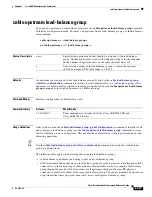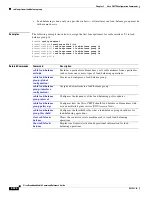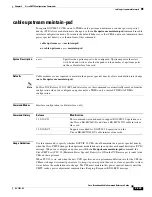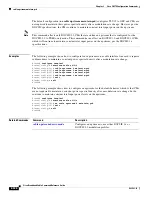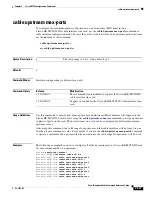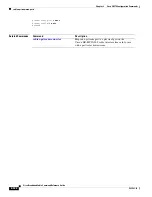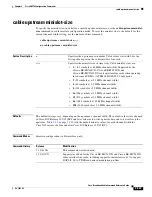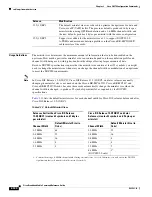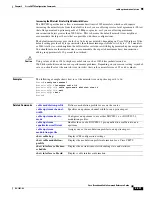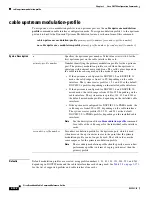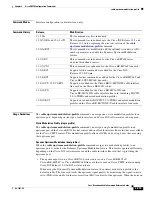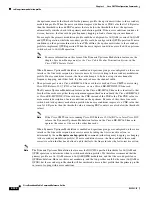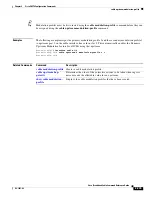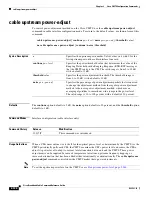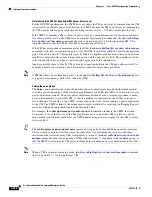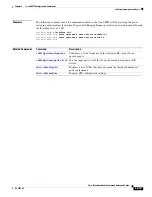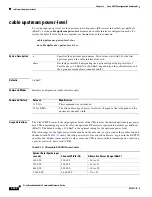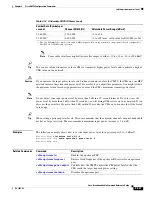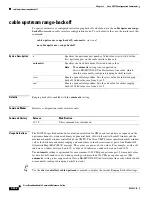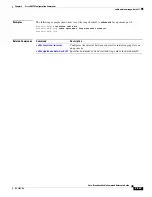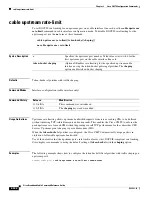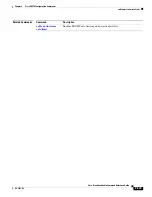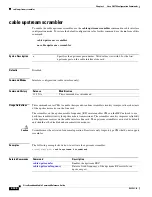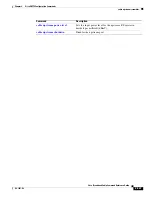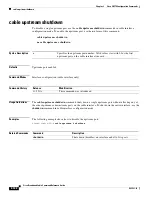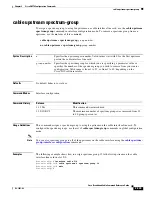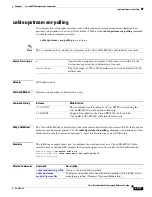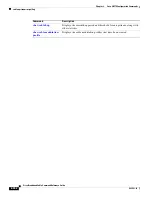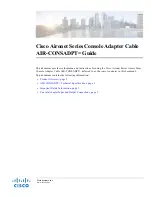
2-337
Cisco Broadband Cable Command Reference Guide
OL-1581-08
Chapter 2 Cisco CMTS Configuration Commands
cable upstream power-adjust
Setting the threshold Option
The
threshold
option specifies the allowable range between the target upstream power for a CM and the
actual receive power that the CMTS is measuring for that CM. If the CM receive power level is above or
below the target power level by a value that is greater than the
threshold
option, the CMTS will
command the CM to change its power level. When the CMTS receive power level for a CM falls within
the
threshold
range of the target power level, the CMTS stops commanding the CM to change its power
level.
For example, the default
threshold
value of 1 dB means that the CM must be 1 dB above or below its
target power range before the CMTS will command it to change its power level. If the CM is within 1 dB
of its target power level, the CMTS does not adjust the CM’s power level.
Note
The
threshold
parameter can be set from 0 dB to 10 dB with a default of 1 dB. However, do not set the
threshold
to 0 dB because this means that the CMTS will command all CMs to continually change their
power levels until the CMTS measures the power levels at exactly 0 dBmV. Cisco recommends that you
set the
threshold
parameter to a minimum of its default value of 1 dB so that the CMs do not change
their power levels continually for minuscule RF plant variations.
Setting the continue Option
The
continue
option specifies the maximum allowable range for the CM’s power level, in relation to its
target power level. The CM can operate even at its maximum transmit power level, as long as it is within
the
continue
range. The
continue
parameter can be set from 2 dB to 15 dB, with a default of 2 dB. For
example, with the default value of 2 dB, the CM can operate within 2 dB of its target power level, even
if it is transmitting at its maximum power level.
The
continue
option works together with the
threshold
option to control the CM’s operation. If the CM
is within the
threshold
range, the CMTS sets the Ranging Status field of its RNG-RSP messages to
SUCCESS. If the CM is outside the
threshold
range, but within the
continue
range, the CMTS sets the
Ranging Status field to CONTINUE.
Note
Cisco recommends designing the network so that CMs are at least 6 dB from the CM’s maximum
transmit power level. This will accommodate new services, changing modulation schemes, different
channel widths, customer-installed passives, temperature variations, and other non-linearities. DOCSIS
specifies a minimal power range of +8 dBmV to +55 dBmV for 16-QAM operation and +8 dBmV to
+58 dBmV maximum power level for QPSK operation. Cisco CMs typically have a maximum power
level of +60 dBmV, which exceeds the DOCSIS standards.
Tip
If a number of CMs are transmitting close to their maximum transmit power, try increasing the
continue
range to allow the CMTS to continue adjusting the CM’s power levels. This situation can happen when
systems use high value taps, such as 29 dB taps, in the design of the plant.
Note
When the CM requires 16 successive power adjustments that are greater than the value of the
continue
option, the CMTS reinitializes the CM and starts to rescan downstream carriers, as per the DOCSIS
specification.

